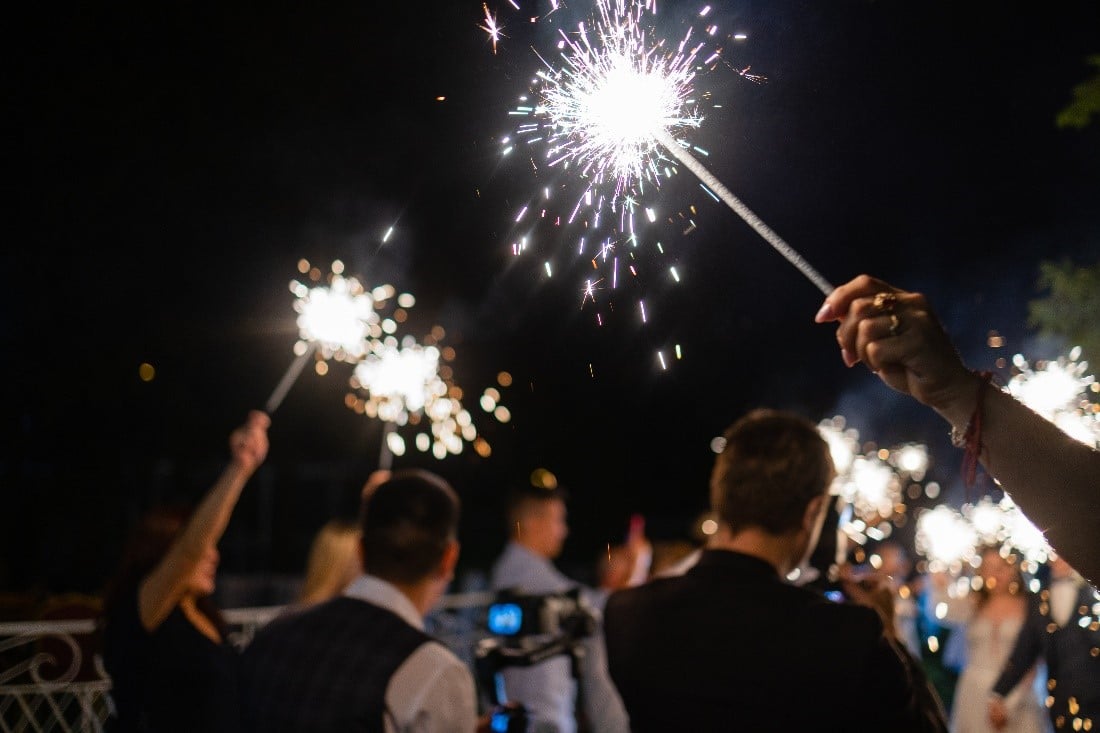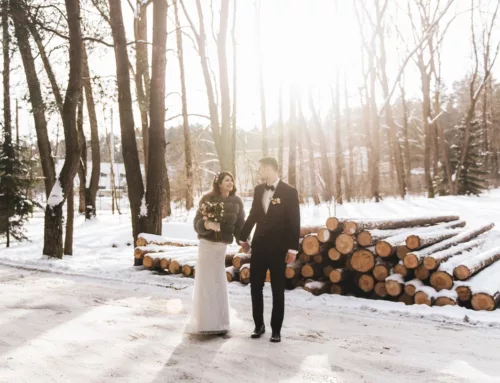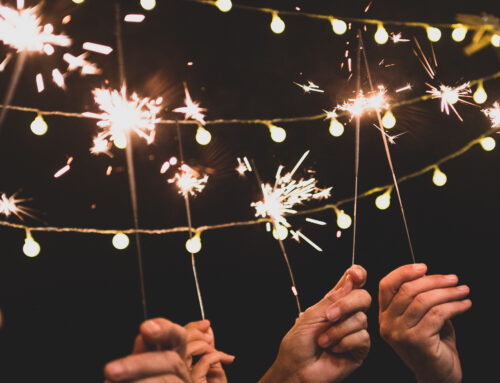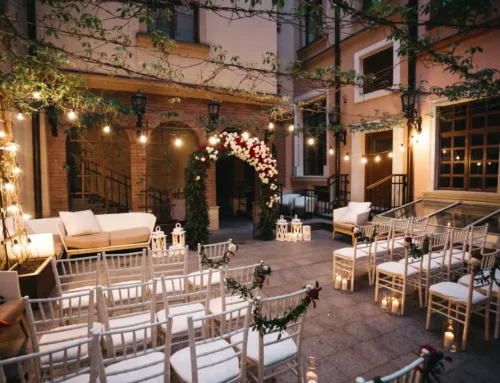Sparklers are small sticks of crackling fire that serve as a popular way to celebrate special events like holidays, parties, and weddings. They’re also a type of consumer firework, but they look very different from the fireworks many of us are used to seeing. Though sparklers are considered fireworks, they differ greatly from their display counterparts in the sky. One of the fundamental distinctions between the two is in how they are made. Let’s break down the anatomy (or should we say chemistry) of a sparkler.
First, we have the handles. Sparklers typically have a metal wire or wooden handle, but the metal option is the most common. Wood-handled sparklers are often made of bamboo or pine. The length of the handle depends on the product you’re buying. For instance, our #36 wedding sparklers are 35 inches long, while our #10 wedding sparklers are 10 inches long. The stick’s length is what determines how long the sparkler will burn. This handle is coated from one end with a chemical mixture, and this is the part that will burn.
This mixture on the handle can be made with a variety of chemicals, and these chemicals control the glow of the sparkler and how it burns. For example, an aluminum and magnesium fuel mixture creates a sparkler’s yellow/white glow, while ferrotitanium creates a golden glow.
Oxidizers are the next component of a sparkler and play a crucial part in the burning process. Oxidizers produce oxygen as the metal fuel burns. They’re also why a sparkler has a crackling effect instead of looking like a stick of burning metal. Chemically, oxidizers are typically nitrates, chlorates, or perchlorates.
Lastly, binders are the substances that keep this whole mixture together. Without a binder, the metal fuel and oxidizer are just a paste. Most commonly, a binder of dextrin, starch, or shellac compound is used to bond the chemical mixture to the handle. The binders are then dampened by water or alcohol, depending on which compound is used. Our wire sparklers are dipped from one end in to the paste mixture and allowed to set for a moment. They’ll then be dipped a second time to ensure the paste is strong enough and a primed tip will be added to make lighting easier. Afterwards, the sparkler is given time to dry fully.
Wedding sparklers are not much different from regular sparklers; they’re used for different events and come in a variety of sizes. Regardless of the color, size, and burn time of your sparkler, they’re all made with some combination of the fuels, oxidizers, and binders listed above. The next time you use sparklers for your special event, you’ll feel like a chemist with this knowledge!





